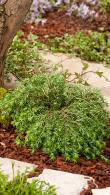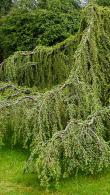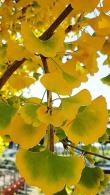Tsuga Canadensis Eastern Hemlock
Shade-Loving Evergreen Conifer with Typically Drooping Branches.
1. Add items to basket
2. Go to the basket
3. Enter your postcode in Delivery Price Check
To check delivery cost add your plants to basket, then you can type your postcode in our Quick Delivery Price Check.
Tsuga Canadensis, commonly known as Eastern Hemlock or Canada Hemlock, is an elegant evergreen conifer prized for its soft texture, pyramidal habit and outstanding shade tolerance. This graceful species is admired for its fine, feathery foliage that lends year-round depth and movement to woodland gardens and shaded borders. Tsuga Canadensis brings refined structure and evergreen density to spaces where few conifers thrive, making it a versatile choice for both naturalistic and formal landscapes. Its balanced outline, gentle colouring, and adaptability ensure Tsuga Canadensis remains a favourite for creating serene, layered plantings.
Tsuga Canadensis develops as a medium-sized evergreen tree with a single trunk and gracefully layered horizontal branches. The small, flat needles are rich green above and softly silvery beneath, forming a light, textured canopy that captures changing light beautifully through the seasons. Young trees display a classic pyramidal shape that gradually matures into a broad, flattened crown with age. In spring, delicate pale-green shoots contrast attractively with the mature foliage, while tiny red-brown buds add subtle colour through winter. Originating from the cool forests of eastern North America, Tsuga Canadensis is a key representative of the hemlock genus, thriving naturally beneath taller canopy trees. When planted in gardens, it combines effortlessly with shade-loving plants such as ferns, hostas, and hydrangeas, enriching woodland-style compositions with evergreen form and quiet grace. Tsuga Canadensis stands apart from related species such as Tsuga Heterophylla by its finer texture and particularly strong tolerance of shade.
Height and Spread of Tsuga Canadensis
Tsuga Canadensis typically reaches between 15 and 25 metres in height, spreading 5 to 10 metres wide over several decades. Its growth is steady but not rapid, forming a dense, layered structure that provides consistent evergreen presence. In cultivation, it can be pruned or trained for smaller gardens, retaining its natural symmetry and softly arching outline. Eastern Hemlock’s refined stature makes it equally suitable for larger borders, woodland edges, or as a backdrop specimen in shaded gardens.
How Hardy is Tsuga Canadensis?
Tsuga Canadensis is extremely hardy across the UK, tolerating cold winters and frost without difficulty once well established. It thrives in moist, well-drained, slightly acidic soil and prefers partial shade to full shade conditions. While adaptable, it performs best when protected from drying winds and excessive sun exposure, which can cause browning of the needles. This hemlock appreciates consistent moisture and benefits from a cool root environment maintained with organic mulch. Its reliable cold tolerance and shade resilience make Tsuga Canadensis one of the most dependable conifers for challenging, low-light garden settings.
Uses in Garden and Landscape:
Eastern Hemlock is highly versatile in design, serving as a refined evergreen backdrop, specimen tree, or part of a mixed conifer grouping. Its feathery foliage contrasts attractively with broad-leaved evergreens and shade perennials, creating soft transitions in texture and tone. Tsuga Canadensis is ideal for woodland gardens, shaded slopes, and as a screening element in sheltered sites. It pairs well with rhododendrons & azaleas, and Japanese maples, enhancing layered planting designs that prioritise subtlety and seasonal variation. In larger landscapes, Canada Hemlock contributes structure and year-round greenery while supporting birds and other wildlife that shelter within its dense branches.
Care Tips:
Plant Tsuga Canadensis in autumn or spring into fertile, humus-rich soil that retains moisture but drains freely. Water regularly during the first growing season to encourage deep rooting, particularly during dry spells. Apply a balanced, slow-release fertiliser in spring to promote steady, healthy growth. Minimal pruning is required, though light shaping may be carried out in late spring to maintain a balanced outline. Mulch annually with leaf mould or compost to conserve moisture and sustain soil acidity. Protect from drying winds, especially when young, and avoid prolonged drought conditions. With appropriate care, Tsuga Canadensis will develop into a long-lived and dignified evergreen presence in the garden.











